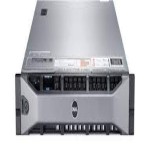In today’s business environment, very few organizations can function without a multitude of software apps. From team collaboration and customer communications, to payments and accounting, business operations are powered by an ever-expanding tech stack. To ensure continued uptime and sustainable growth, application performance monitoring is a must.
What is Application Performance Monitoring?
Application Performance Monitoring (APM) tracks the availability and usage of apps in your organization. The goal of APM is to detect issues and resolve problems with applications before they impact productivity. For example, if a particular application is experiencing delayed load times, your APM would generate an alert, analyze the issue, and suggest an appropriate response.
Application monitoring tools are used to continuously scan your entire network of apps for issues with speed, usability, security, and more. Application performance monitoring is a proactive process that helps you avoid downtime and other potential problems with business-critical apps.
Why Monitoring Your Applications is Important
Effective application management and performance monitoring prevents a host of issues that could impact business productivity. The 4 key reasons to monitor your applications include:
1. Issue Detection and Resolution
Application monitoring tools enable businesses to detect issues within their applications, including errors, slow response times, and downtime. By identifying these problems, you can take steps to resolve them quickly, preventing business disruption and lost revenue.
2. Improved Performance
Application performance monitoring is important to help you identify where key software is underperforming. By analyzing metrics such as response time and throughput, businesses can make data-driven decisions about how to optimize, upgrade, or switch SaaS apps.
3. Enhanced User Experience
With application monitoring, businesses can gain insights into how employees interact with everyday applications. By monitoring user behavior, you can identify common pain points, provide targeted training, fill any user experience gaps, and eliminate under-performing software.
4. Robust Security
Application performance monitoring is critical to identify security vulnerabilities and address threats. By monitoring for unusual activity and unauthorized access attempts, businesses can detect and respond to potential breaches and ensure SaaS application security.
Application Monitoring Tools and Software
Application monitoring tools help to consolidate your overview of all business apps and take action when their performance deems necessary. Here’s what to look for in application monitoring software:
1. Tracking and Diagnosis
Your application performance monitoring tool should be able to quickly identify and diagnose issues that impact performance, such as slow response times, high error rates, and resource utilization problems. Ensure your APM tool includes performance alerts to allow for a timely response.
2. Root Cause Analysis
When an issue is identified, your application monitoring software should provide detailed root cause analysis. Beyond just resolving the initial problem, this also allows you to address the fundamental cause and prevent it from recurring.
3. Performance Metrics and Reporting
Choose an application performance monitoring tool that presents you with easy-to-digest data visualizations and actionable reports. This should include your benchmark performance metrics, insights into current operations, and predictive analytics.
5 Application Monitoring Best Practices
Follow these application monitoring best practices to boost your app performance and security.
1. Define Your Objectives
Before implementing application performance monitoring, define your goals and objectives. Identify the key performance metrics you want to track and set clear expectations for application performance.
2. Select the Right Application Monitoring Tool
Select an application monitoring tool that aligns with your organization’s needs and goals. Look for a solution that offers real-time monitoring, root cause analysis, and actionable reports.
3. Stay Alert
Don’t set-and-forget your application monitoring strategy. Check performance updates regularly and enable alerts so you can act quickly in the event of a problem. App monitoring works best when you are responsive to identified problems.
4. Act on Data
Use your application performance data to make informed business decisions on future app requirements and streamline your current tech stack. Actively review your reports for new insights or deviations in performance.
5. Continuously Optimize
Take steps to continuously optimize app performance and your employees’ user experience. Focus on any patterns and anomalies in application behavior and work to eliminate recurring issues.
Struggling with Application Performance Monitoring?
As your business scales, your tech stack tends to grow with it. Monitoring the performance of each app individually is time consuming and labor intensive. But, without effective application monitoring, you can quickly run into problems with critical business operations. Want to learn more about simplifying your application performance monitoring? Get in touch with Electric today.









